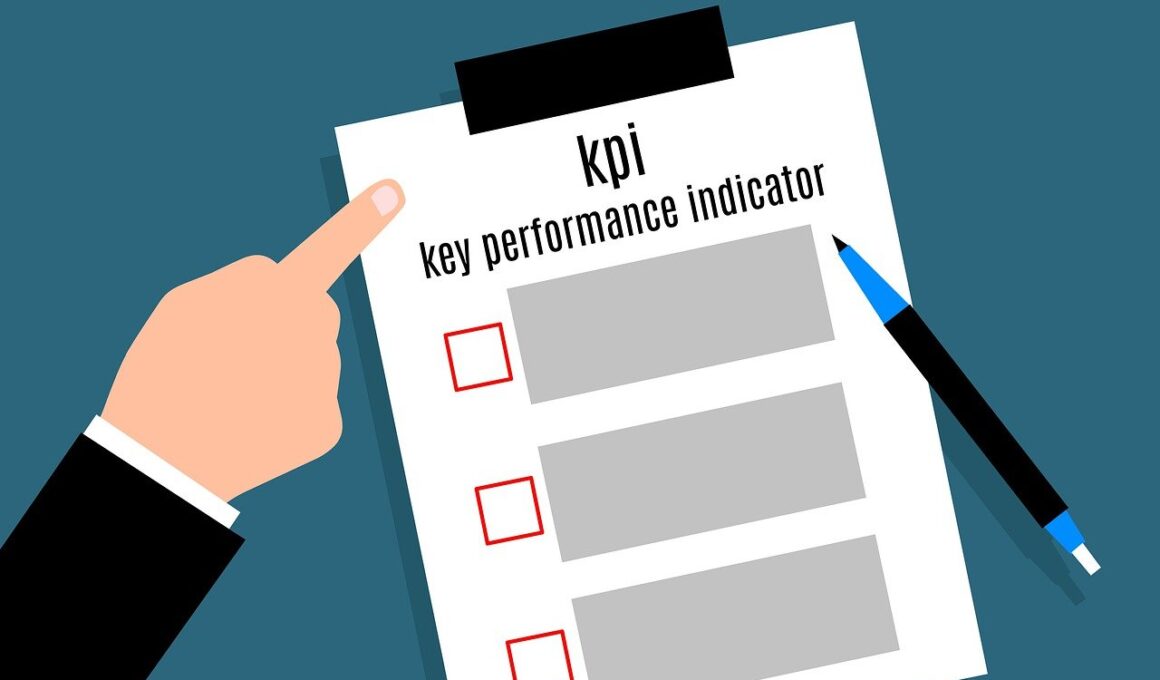Using Project Reporting to Track Key Performance Indicators (KPIs)
Effective project reporting plays a crucial role in tracking key performance indicators (KPIs) within any organization. By maintaining accurate reports, project managers can evaluate how well objectives are being met, identify areas needing attention, and make data-driven decisions. The key to effective reporting is to ensure that the information is presented clearly and concisely. It is essential to select the right KPIs to measure the success of a project. KPIs should be specific, measurable, achievable, relevant, and time-bound (SMART). Regularly updating stakeholders on these KPIs through structured reports can help improve transparency and build trust among project teams. Additionally, these reports should highlight trends over time and provide a visual representation of performance, making it easier to see progress at a glance. Including elements like charts or graphs can enhance comprehension. Understanding KPIs not only helps in evaluating project performance but also informs necessary adjustments to improve outcomes. Thus, project managers should prioritize setting up an effective project reporting framework that aligns with the broader organizational goals.
Successful projects rely heavily on real-time data reporting to support decision-making. When KPIs are tracked consistently, project teams can course-correct as needed, which significantly increases the likelihood of achieving project objectives. One effective approach to project reporting is through the use of dashboards. Dashboards serve as a visual representation of KPIs, allowing stakeholders to quickly gauge progress and performance. They can also highlight critical areas that require immediate attention. To create an effective dashboard, it’s important to select KPIs that are relevant to the project’s goals and objectives. Furthermore, using color coding can help stakeholders quickly identify areas of concern. Red may signify underperformance, while green indicates goals are being met or exceeded. Regular review sessions can encourage teams to actively participate and discuss results, thereby promoting accountability and ownership. Additionally, providing a narrative or context around performance metrics is essential, helping stakeholders understand not just the numbers but also the story behind the data. By employing streamlined methods for reporting KPIs through dashboards, project managers can enhance communication and ensure everyone is aligned with project goals.
Importance of Accurate Data
Accurate data is the backbone of effective project reporting. Poorly compiled data leads to misleading conclusions, which can lead to costly decisions. Therefore, project managers must invest adequate time and resources into gathering reliable data from valid sources. Using an integrated project management tool can aid in collecting data seamlessly across various metrics. These tools help consolidate information efficiently, ensuring that data is up-to-date and readily accessible. Moreover, consistency in data collection processes ensures that reporting stays uniform over time. Periodic audits of the data can further ensure accuracy and integrity. Stakeholders should be made aware of the importance of data integrity and trained on how to contribute to accurate reporting. Inadequate training can lead to errors that skew results, negatively affecting strategic decisions. Establishing a culture of accountability in data handling can greatly improve the quality of reports. When team members know that their data contributions are essential, they are likely to be more conscientious. In summary, fostering a commitment to accurate data collection and reporting is essential for the success of any project management endeavor.
Incorporating stakeholder feedback into project reporting can help ensure that the information presented is relevant and useful. Regular communication with stakeholders allows project managers to understand their priorities and concerns, which can shape what KPIs are monitored. By doing this, reports can focus not just on quantitative data, but also include qualitative insights that reflect stakeholder sentiments. Surveys and feedback forms provide valuable input that should be integrated into the reporting framework. Beyond just hard numbers, stakeholders want to know the impact of a project, such as outcomes, learning experiences, and future implications. Utilizing mixed methods of data collection can capture this broader perspective. For instance, combining statistical KPIs with testimonials from team members can enrich reports and help create a compelling narrative. As project goals evolve, so should the KPIs being monitored. A flexible reporting structure allows for adaptations to priorities, ensuring that reports stay relevant to current project status. Continuous improvement in project reporting practices will ultimately foster better stakeholder engagement and alignment with project objectives.
Visualizing KPIs for Better Understanding
Visual representation of KPIs enhances understanding and retention of information. A well-designed report utilizes graphics, charts, and diagrams to break down complex data into easily digestible formats. Utilizing bar graphs, pie charts, and line graphs can succinctly convey critical information while drawing the reader’s attention. Effective visualization can lead to quicker insights and informed decision-making. Utilizing software tools designed for report visualization can assist project managers in transforming raw data into engaging presentations. An interactive report can add another layer of engagement, allowing users to drill down into specifics. Presenting data visually not only aids in comprehension but also makes presentations more engaging for stakeholders. In meetings, visualized data can stimulate discussions and encourage collaborative problem-solving. However, it is essential to keep visuals clear and uncluttered, focusing on key metrics without overwhelming the audience. Color schemes should be considered carefully for accessibility and clarity. In essence, investing time into creating visually appealing reports will significantly enhance their impact and make them a valuable asset in communicating project performance effectively.
Reflecting on project outcomes through reporting enables teams to learn from both successes and failures. After completing a project, retrospective reports can help analyze the extent to which KPIs were achieved and why. Identifying which areas met expectations and which fell short provides valuable insights that can guide future projects. This practice encourages a culture of continuous improvement, as teams are prompted to actively evaluate their methods and strategies. Taking time to document lessons learned and sharing them with the organization can enhance overall performance across projects. It may also involve gathering insights from different team members who contributed to the project, creating a comprehensive view of achievements and challenges. Building a repository of these reflections provides a resource for future endeavors, ensuring that teams do not repeat past mistakes. Additionally, reflecting on outcomes can help align future projects more closely with organizational goals. Ultimately, embracing a feedback loop through thorough reporting fosters a learning environment, driving innovation and efficiency in project management.
The Future of Project Reporting
As organizations evolve, so too must their approach to project reporting. Technological advancements are reshaping how project data is captured, analyzed, and reported. Real-time reporting and analytics tools are becoming increasingly prevalent, allowing project managers to access current data at their fingertips. This immediacy supports agile methodologies and enables timely decisions. Machine learning and artificial intelligence could further enhance analysis capabilities, uncovering patterns that humans might overlook. Advanced data visualization techniques such as virtual reality could provide immersive experiences for stakeholders, revolutionizing how project outcomes are communicated. Furthermore, the integration of cloud solutions will facilitate enhanced collaboration, making reporting accessible to teams and stakeholders regardless of geographic locations. This shift towards digital reporting requires project managers to develop new skills and adapt their reporting styles accordingly. While the future holds exciting possibilities, the fundamental principles of clear communication and stakeholder engagement will remain critical. Organizations that prioritize the evolution of their reporting practices will be better equipped to navigate the complexities of modern project management, ensuring success in achieving both immediate and long-term objectives.


